
views
- Consider your region and geographic location to narrow down the possible native species, and eliminate any animals that aren’t present in your area.
- Measure the mouth of the burrow and take note of the shape of the dirt around the hole to get a good idea of the size and digging practices of the animal.
- Contact your local animal control or university extension office for additional help in identifying and containing or removing the animal in question.
Examining a Burrow

Identify the burrowing animals in your region. Start your search broadly and narrow it down by first considering which burrowing animals are present in your area. You can eliminate any animals only found in regions outside your own. Search the internet for “Burrowing animals in [your region]” or call your local agricultural commissioner or animal control center to research this. Though many common burrowing animals are present all over (and as such, might be hard to narrow down by location alone), a little research can still go a long way when deciding between two potential culprits.
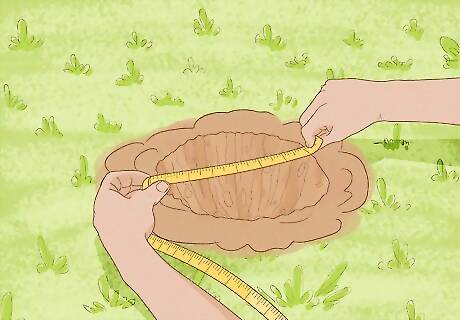
Measure the diameter of the hole. Different animals make different sized holes, and the size of the hole will give you a good idea about what size animal you’re dealing with. Use a tape measure to measure from one edge of the hole to the opposite edge, and wear sturdy garden gloves in case the animal is still present. For example, if you find the hole is very small, say about the width of your finger, you can rule out larger mammals like groundhogs or raccoons, which wouldn’t fit inside. In general, smaller animals (like squirrels) burrow in holes 3 in (7.6 cm) and smaller, whereas medium animals will be around 3–12 in (7.6–30.5 cm).

Examine the mound or soil deposits. Another great indicator is the dirt around the hole, or more specifically the structure, pattern, or placement of the dirt. Different animals tend to have different methods when it comes to disposing of excess soil. Search for piled dirt in unusual places, like on flat areas, or trails of flattened foliage that might lead to a hole. Mounds come in many shapes. Some resemble small volcanoes with holes in the center, others are u-shaped, and still others are shaped like small chimneys or towers.

Consider the location and surroundings of the hole. Just like humans, animals all have their own preferences about where to build their homes. Some like to build near water, while others like to cozy up to man-made structures for extra protection against the elements. Consider where the hole was dug to further narrow down your suspects. For example, if a hole is on the side of a riverbank, you’re likely dealing with a semi-aquatic animal like a crayfish.
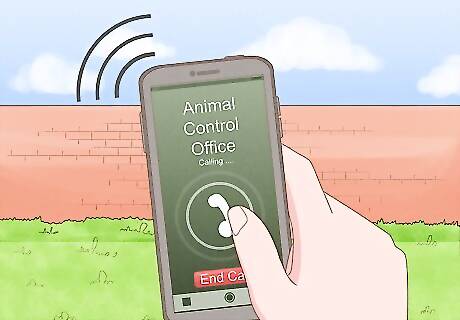
Contact animal control or your local extension office for an expert opinion. There are a great many professional resources available, and if you're stuck or unsure, seeking professional help is often the best course of action. Plus, they can give you expert advice on wild animal removal if that's your ultimate goal. Ring your local animal control, or look up the extension office of your local university to ask for help.
Common Burrows
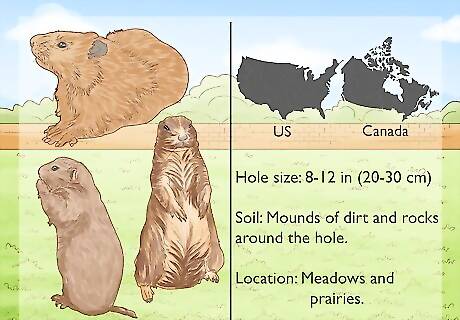
Groundhogs, gophers, and prairie dogs. While these 3 are, in fact, distinct animals, their burrows are largely the same. All of them build extensive networks which can host thousands of animals, so look for devastated local plant life and large swathes of dirt. Geography: All of the United States and Canada. Hole size: 8–12 in (20–30 cm). Gopher holes are often bean-shaped. Soil: Mounds of dirt and rocks around the hole. Location: Meadows and prairies. Groundhogs also dig near gardens or barns.
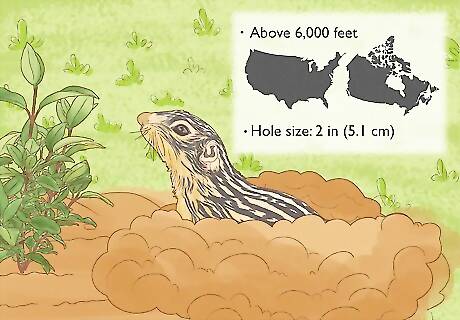
Ground squirrels. Often called “13-lined ground squirrels," these critters create distinct burrows. Look for their distinct white markings, multiple burrow entrances, produce damage, unearthed plants, and snapped shoots of young plants. Geography: North/central United States and Canada, only at elevations above 6,000 feet (1,800 m) Hole size: 2 in (5.1 cm) Soil: No mounds. Location: Near or beneath logs, rocks, or other structures
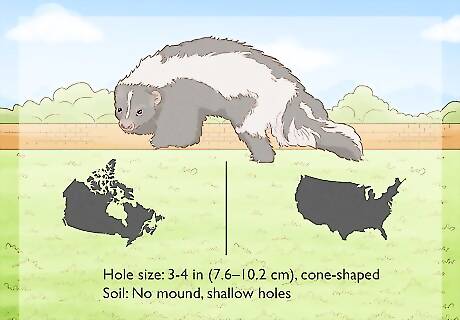
Skunks and raccoons. These mammals also prefer to dig as they forage for food. Look for fresh sod that's stripped or rolled away, as that means you might have a skunk or raccoon on your hands. Geography: United States, Canada, South America Hole size: 3–4 in (7.6–10.2 cm), cone-shaped Soil: No mound, but there may be disturbed earth, such as shallow holes or unearthed plant roots.. Location: Lawns and gardens
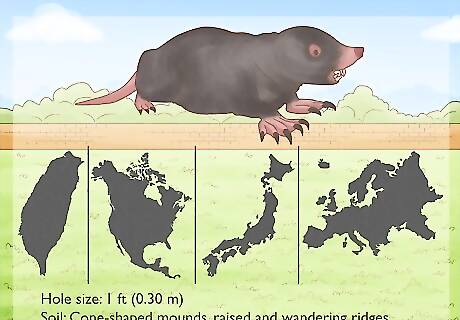
Moles. Mole burrows often cause a good deal of damage while searching for grubs or earthworms, so check for destruction of plant roots and garden as well. Geography: North America, Europe, and other temperate regions like Japan and Taiwan Hole size: 1 ft (0.30 m) Soil: Cone-shaped mounds, raised and wandering ridges Location: Lawns and gardens
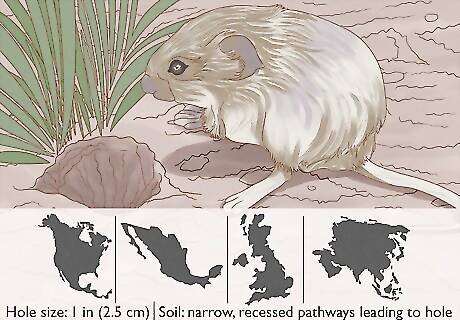
Voles. If you think you might be dealing with a vole, look for burrows with multiple entrances and “runways,” or partially dug paths that they take to get from their burrow to their favorite food sources. Vole burrows are often accompanied by telltale gnaw marks on nearby trees or other foliage. Geography: North America, Mexico, British Isles, Asia Hole size: 1 in (2.5 cm) Soil: No mound, but there may be narrow, recessed pathways leading to the hole. Location: Beneath shrubs or in gardens
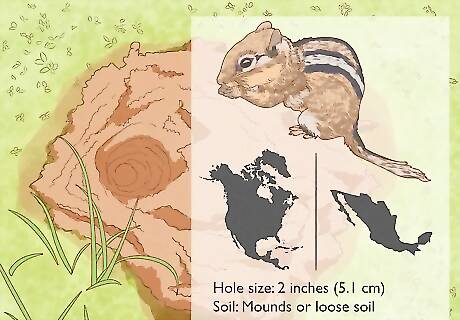
Chipmunks. If you've got chipmunks living nearby foraging for seeds and nuts, you'll hear their shrill calls, so listen close. In additional to their cries, check for damage to tender-stalked plants like flowers or other ornamental plants. Geography: North America, Mexico Hole size: 2 inches (5.1 cm) Soil: Mounds or loose soil Location: Under or near log piles, stumps, buildings
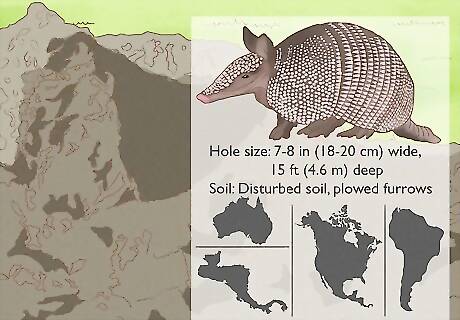
Armadillos. Armadillos are best known for digging holes to reach tasty insects, but they also make burrows to live in. In addition, they’re known to roll back new sod, so keep an eye out for signs of this in your yard. Geography: North, Central, and South America, Australia Hole size: 7–8 in (18–20 cm) wide, 15 ft (4.6 m) deep. Soil: Disturbed soil, plowed furrows Location: Lawns, gardens, flower beds
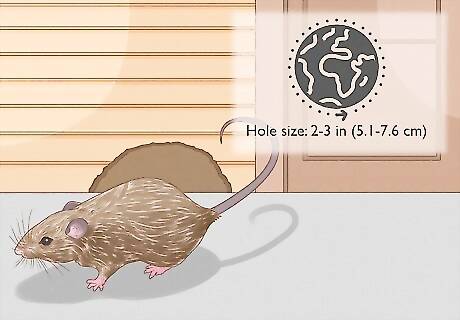
Rats. Rats can make a home almost anywhere, but are also known to burrow in the wild. Look for damage to personal goods or food stores, as well as damage to wooden structures. Geography: Universal Hole size: 2–3 in (5.1–7.6 cm) Soil: Worn or flattened ground in front of the entrance where the rats come and go frequently. Location: Almost anywhere
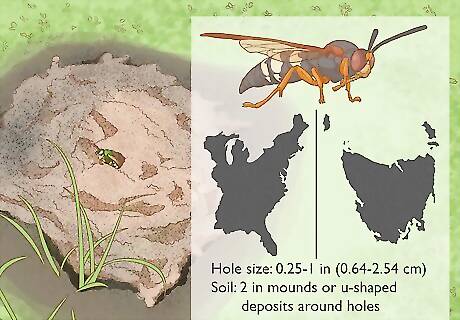
Bees and cicada killers. Many varieties of bees and wasps live underground in the adult stages of their life cycles. Cicada killer burrows are often accompanied by small furrows in the dirt where the wasp dragged a cicada into the hole, so be on the lookout for these. Geography: Eastern United States and Tasmania (cicada killers), Universal (bees) Hole size: 0.25–1 in (0.64–2.54 cm) Soil: 2 in (5.1 cm) mounds or u-shaped deposits around holes. Cicada killer holes often feature small paths into the hole. Location: Areas of sparse vegetation or low grass
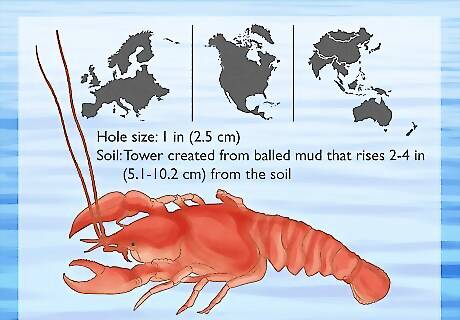
Crayfish. Perhaps the most distinctive burrow on this list, look for small mud stacks, or “chimneys,” that lead to creek beds. This is a sure sign of a crayfish burrow. Geography: North America, Europe, East Asia Hole size: 1 in (2.5 cm) Soil: Tower created from balled mud that rises 2–4 in (5.1–10.2 cm) from the soil Location: Near creeks




















Comments
0 comment